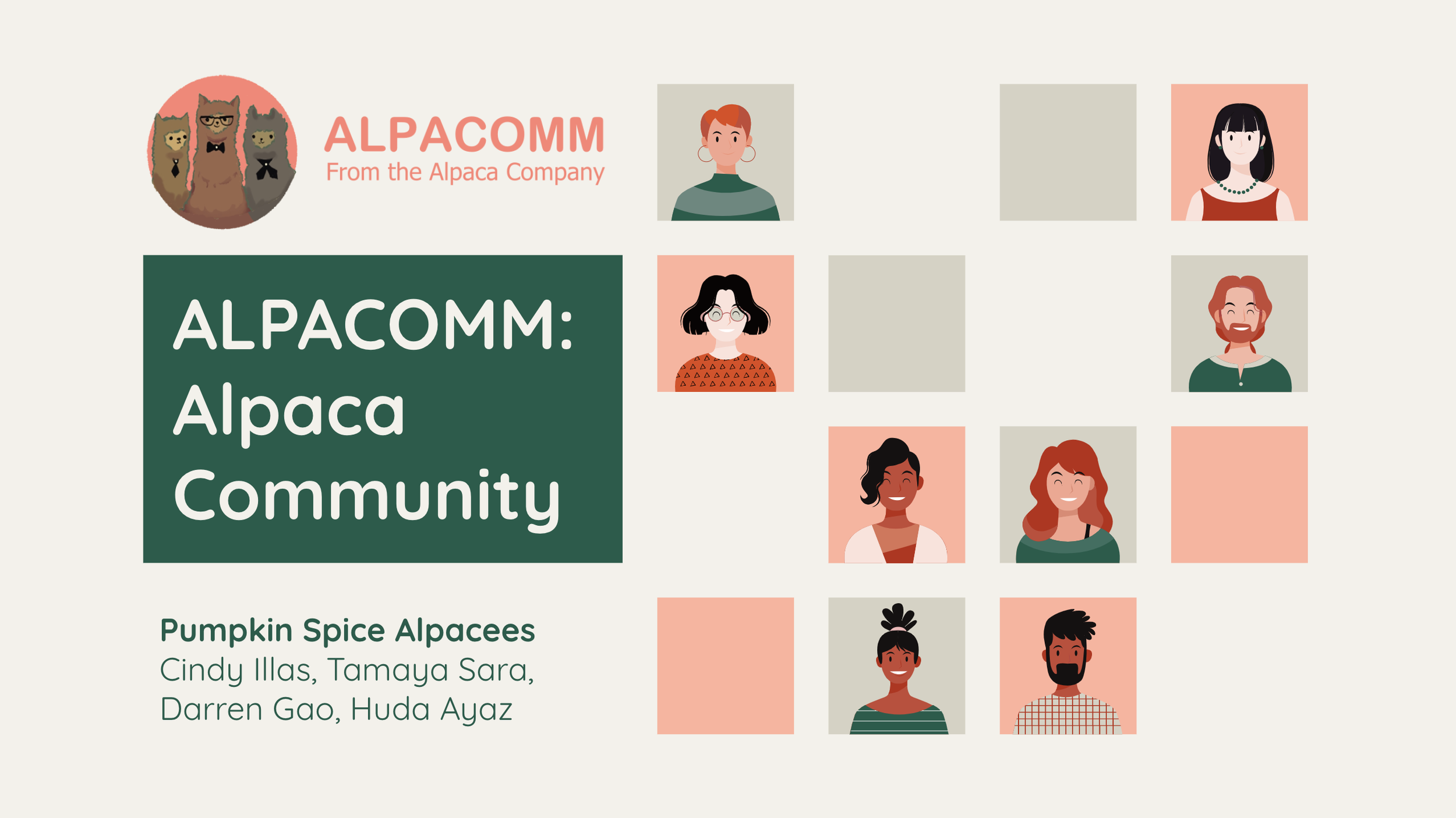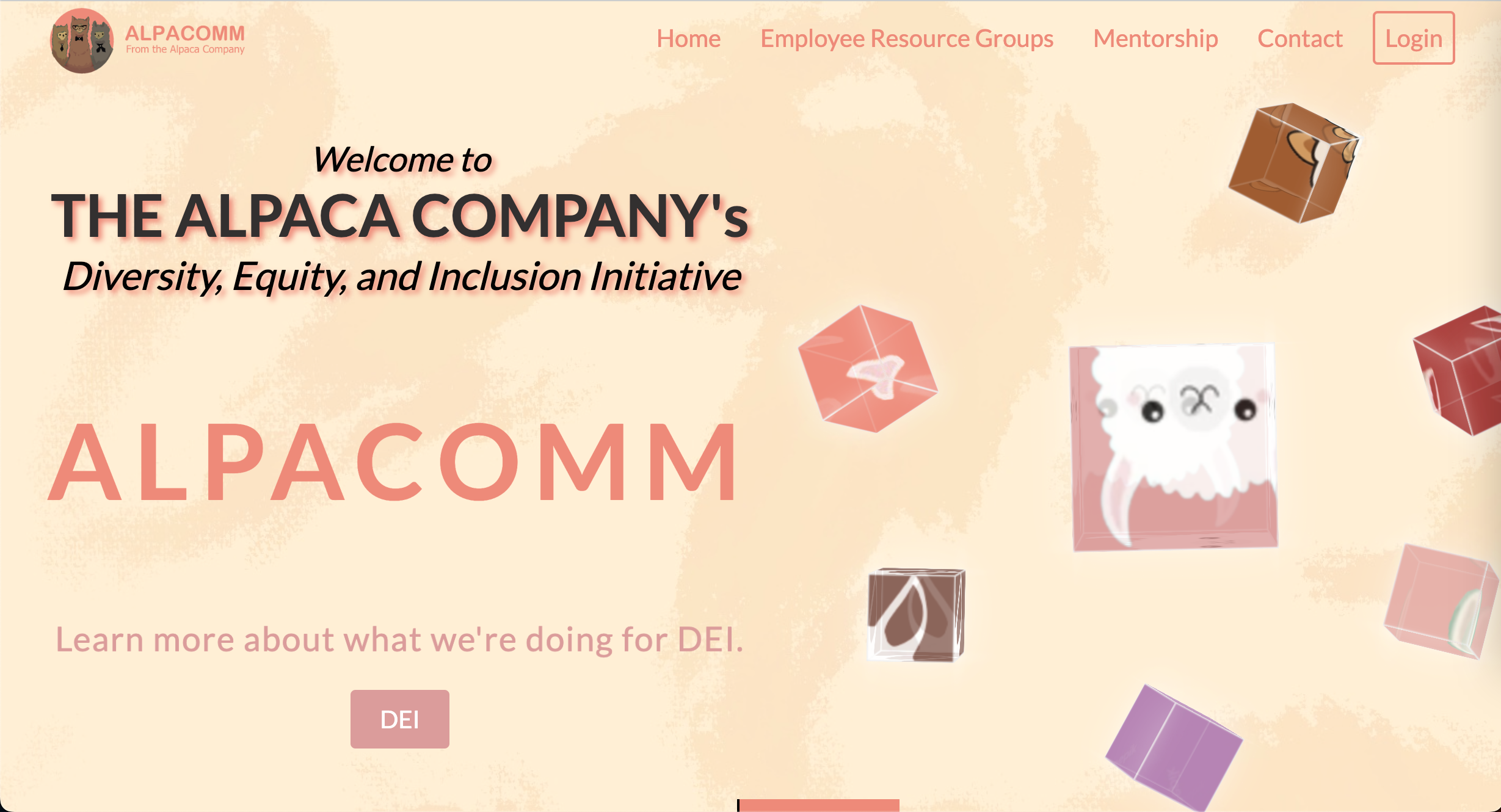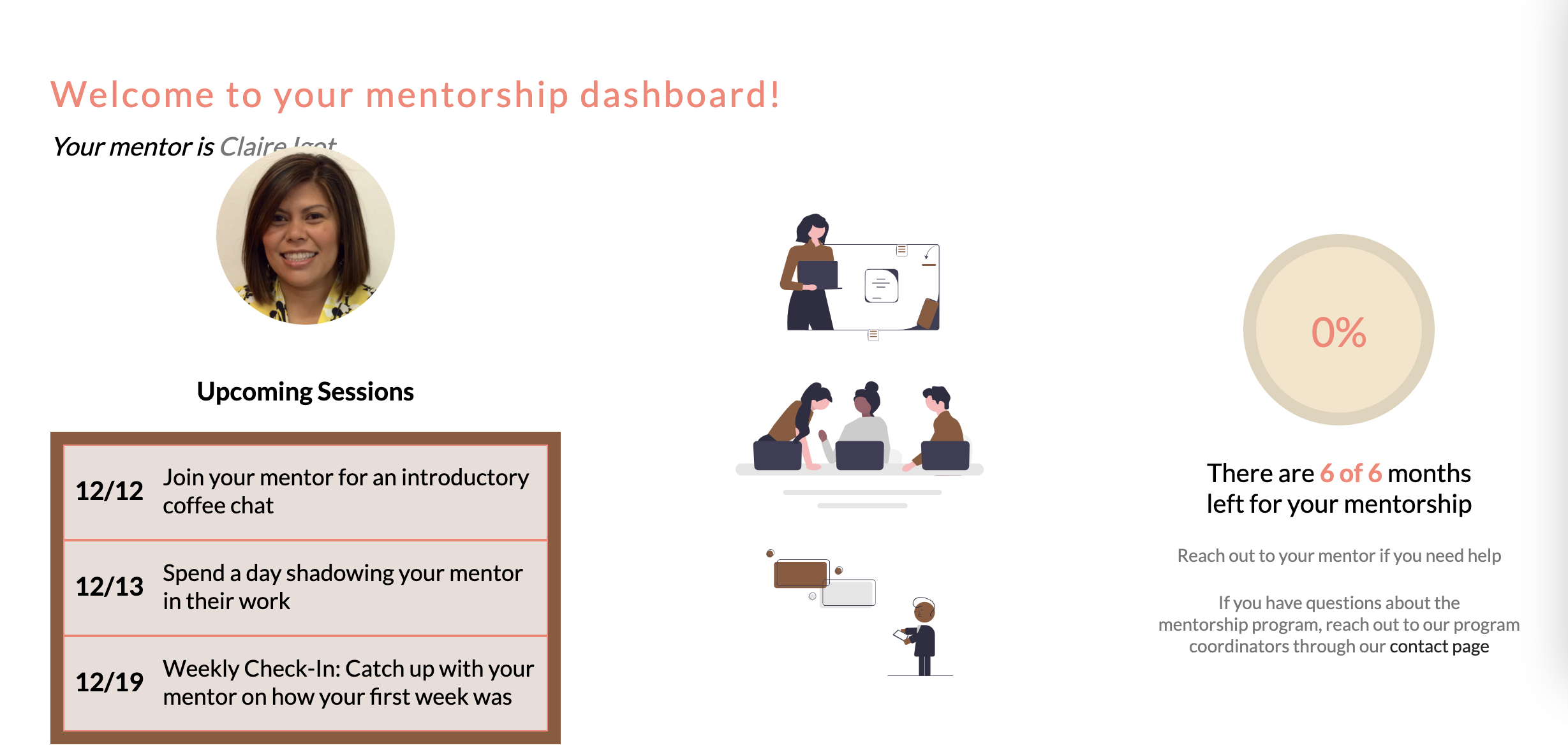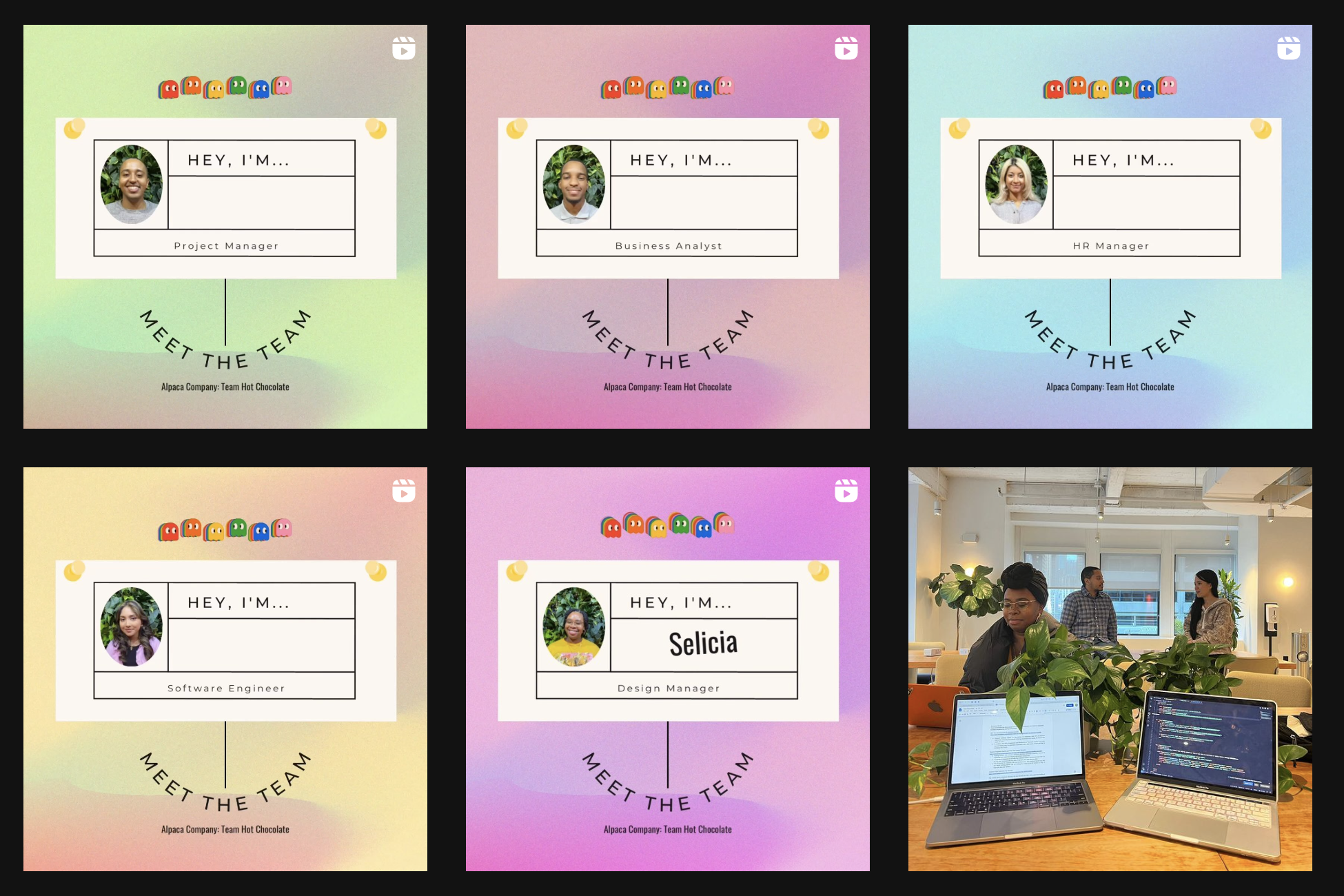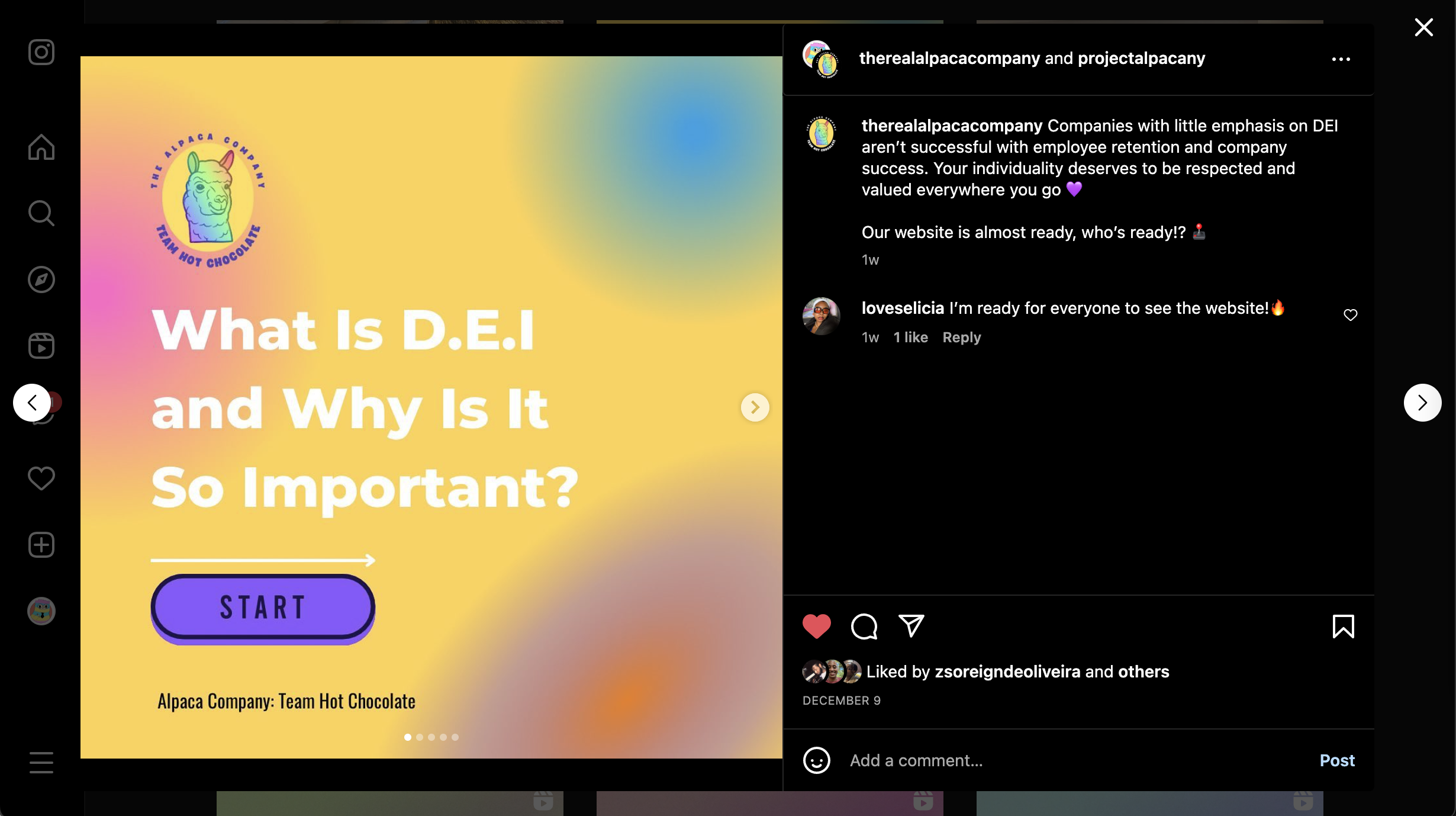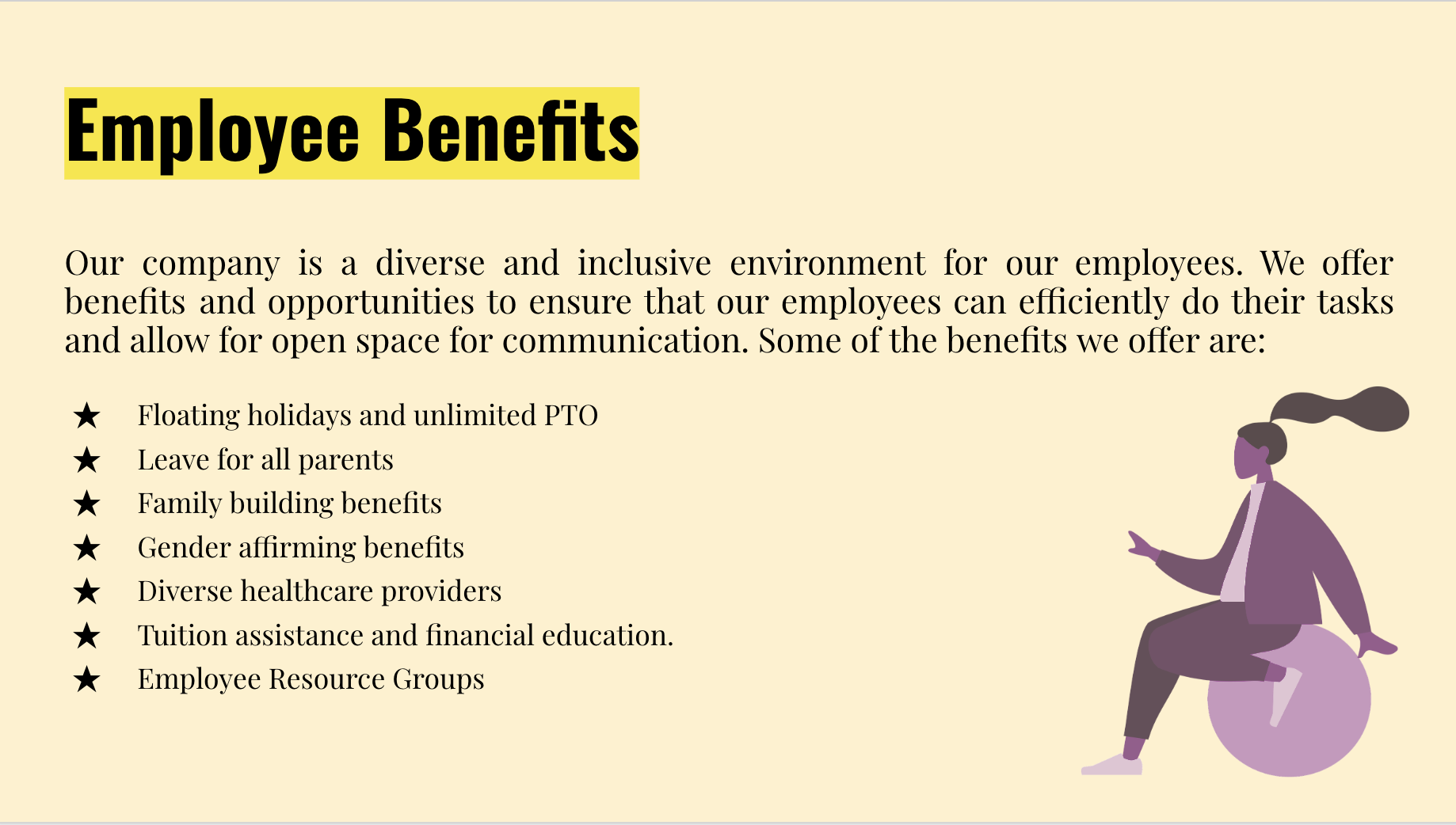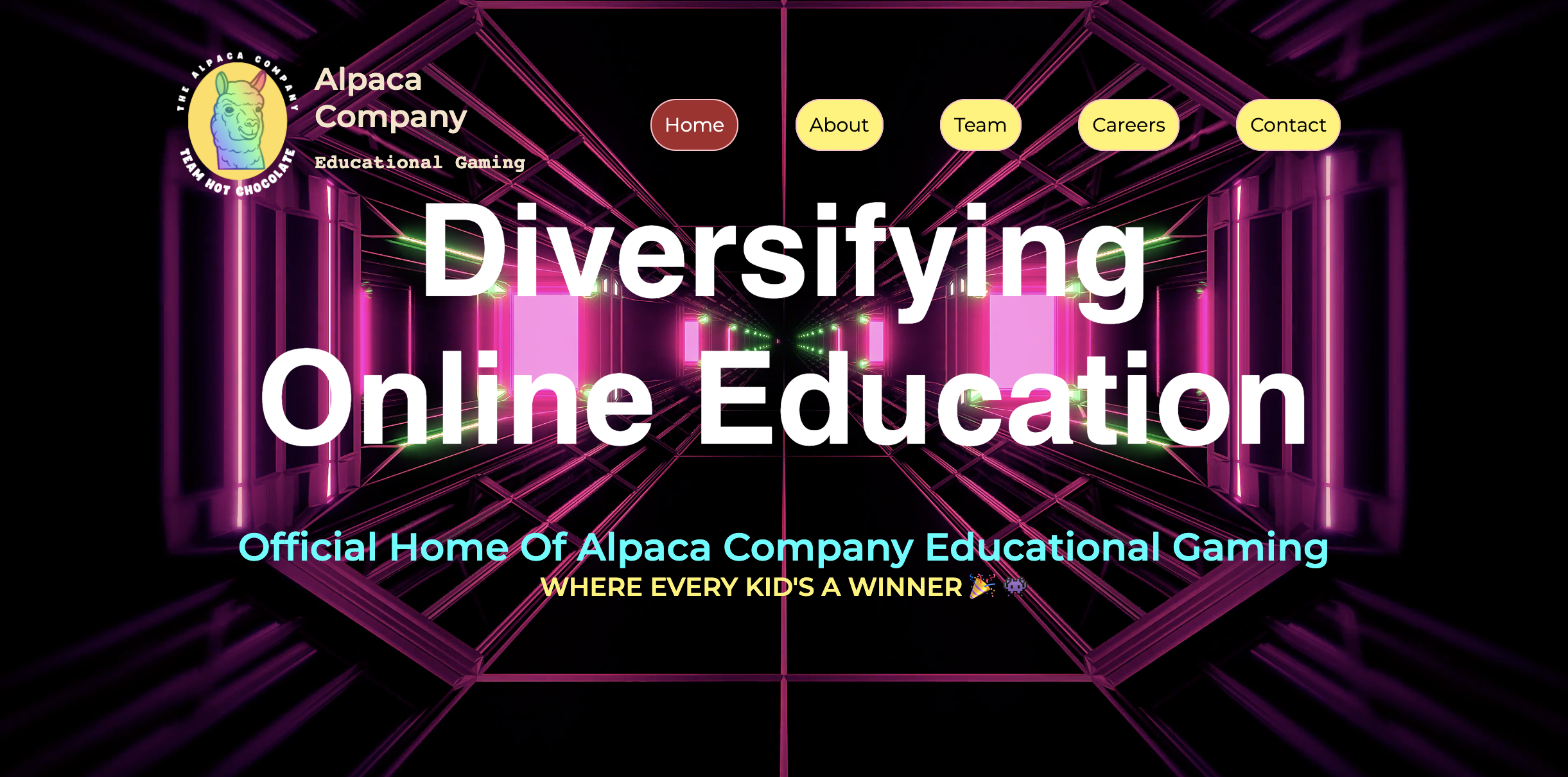DEI Hackathon
One month ago, our Alpacees dived into their first group project. Our 2nd cohort are pandemic kids, where for the past 3 years they’ve spent primarily behind their screens with limited offline interaction with others. We decided to launch this project so they could practice and prepare to be in a real world workplace, where we work in groups and teams. The Alpacees were assigned to one of three teams. Would they sink or swim?
Here was the project prompt and brief:
You’re joining The Alpaca Company as a summer intern and you’re tasked to work on a project for their HR department to help with their DEI (Diversity, Equity, Inclusion) initiative. The Alpaca Company’s CEO has decided to prioritize building a diverse workforce and creating a work environment that is equitable and inclusive for all staff. As an intern coming into the company with a fresh perspective, they’re looking to you to help create innovative solutions. They have a few themes that they are prioritizing, but these are broad enough where there are lots of possibilities for ideas and implementation.
In this project, you’ll work in a team of 5 interns from various departments to propose a solution. Your solution must be a technical product demo with working code, but the form is up to you. For example, it can be a web app, mobile app, a game, or a dashboard with data, etc.
The 3 teams — Apple Cider, Pumpkin Spice, and Hot Chocolate — all created very different solutions to tackle the problem. Apple Cider created a mentorship matching program for career changers wanting to transfer within the company, Pumpkin Spice created a DEI dashboard that highlighted various resources for employees, and Hot Chocolate created strategies to promote diversity via social media, website, and an interactive activity.
They were asked to present their projects in front of 3 judges — Mary Abrasley, Senior Director at Talent Acquisition at Mediabrands, Jenna Scherma, Product Manager at Bowery Farming, and Kurk Fisher, Alpacee from our first cohort and IT professional.
We used this project as an assessment tool in order to take a closer look at their strengths and areas in need of improvement. Because we encouraged them to think for themselves and allowed them to fail in a safe space, we learned a lot about the gaps in their education and we also observed where they flourished and shone — how they take initiative, how they communicate & work together, their technical skills, etc. We’ll use this information to help them build on their strengths in the next few months, so they can feel confident walking into any interview or work environment.


